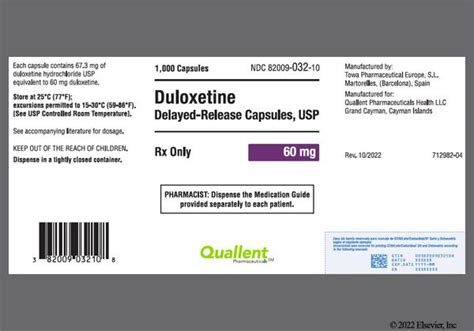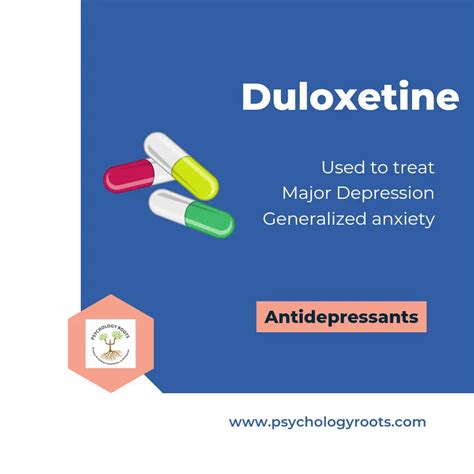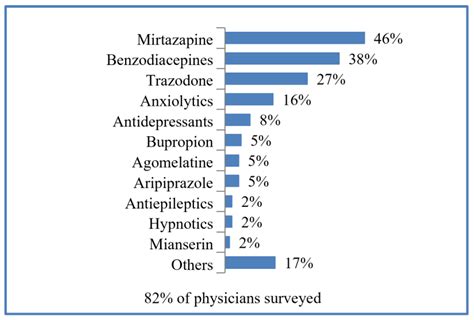Intro
Duloxetine treats depression, anxiety, and fibromyalgia, offering benefits like improved mood, reduced pain, and enhanced mental well-being, with uses extending to chronic pain management and stress relief.
Duloxetine is a medication that has been widely used to treat various health conditions, including depression, anxiety disorders, and certain types of chronic pain. The importance of understanding the uses and benefits of duloxetine cannot be overstated, as it has the potential to significantly improve the quality of life for individuals suffering from these conditions. In this article, we will delve into the world of duloxetine, exploring its mechanisms, benefits, and potential side effects, as well as providing practical examples and statistical data to support its effectiveness.
The prevalence of mental health disorders and chronic pain conditions has increased significantly over the past few decades, affecting millions of people worldwide. Duloxetine, a serotonin-norepinephrine reuptake inhibitor (SNRI), has emerged as a valuable treatment option for these conditions, offering a unique mechanism of action that sets it apart from other medications. By increasing the levels of serotonin and norepinephrine in the brain, duloxetine helps to regulate mood, reduce pain, and improve overall well-being. As we explore the uses and benefits of duloxetine, it becomes clear that this medication has the potential to make a significant impact on the lives of individuals suffering from these conditions.
The effectiveness of duloxetine in treating depression, anxiety disorders, and chronic pain conditions has been extensively studied, with numerous clinical trials demonstrating its efficacy. For example, a study published in the Journal of Clinical Psychopharmacology found that duloxetine was effective in reducing symptoms of major depressive disorder, with a significant improvement in mood and overall quality of life. Similarly, a study published in the Journal of Pain Research found that duloxetine was effective in reducing chronic pain in individuals with diabetic neuropathy, with a significant reduction in pain intensity and improvement in functional ability.
Duloxetine Mechanism of Action

Duloxetine Uses
The uses of duloxetine are diverse, including the treatment of major depressive disorder, generalized anxiety disorder, fibromyalgia, and chronic musculoskeletal pain. Duloxetine has also been used to treat other conditions, such as neuropathic pain and stress urinary incontinence. The medication is available in various forms, including capsules and delayed-release capsules, and is typically taken once or twice a day.Duloxetine Benefits

Duloxetine Side Effects
While duloxetine is generally well-tolerated, it can cause side effects, including nausea, headache, and dizziness. Other potential side effects include dry mouth, constipation, and increased sweating. In rare cases, duloxetine can cause more serious side effects, such as serotonin syndrome and abnormal bleeding.Duloxetine Dosage

Duloxetine Interactions
Duloxetine can interact with other medications, including antidepressants, antipsychotics, and anti-anxiety medications. It is essential to inform a healthcare provider about all medications being taken, including prescription and over-the-counter medications, to minimize the risk of interactions.Duloxetine Warnings and Precautions

Duloxetine Pregnancy and Breastfeeding
Duloxetine should be used with caution during pregnancy and breastfeeding, as it can pass into the fetus or breast milk. It is essential to consult with a healthcare provider before taking duloxetine during pregnancy or breastfeeding.Duloxetine Overdose

Duloxetine Withdrawal
Duloxetine withdrawal can occur when the medication is stopped abruptly, with symptoms including dizziness, headache, and nausea. It is essential to taper off duloxetine gradually under the guidance of a healthcare provider to minimize the risk of withdrawal symptoms.Duloxetine Alternatives

Duloxetine Cost
The cost of duloxetine varies depending on the location, insurance coverage, and pharmacy. It is essential to consult with a healthcare provider or pharmacist to determine the cost and to explore options for reducing costs, such as generic alternatives or patient assistance programs.Duloxetine Reviews

Duloxetine Ratings
Duloxetine ratings vary depending on the source and the individual's experience. It is essential to consult with a healthcare provider and to read reviews from multiple sources to get a comprehensive understanding of the medication's effectiveness and potential side effects.In conclusion, duloxetine is a valuable treatment option for various health conditions, including depression, anxiety disorders, and chronic pain. While it can cause side effects, the benefits of duloxetine, including improved mood, reduced pain, and improved overall quality of life, make it a medication worth considering. By understanding the uses, benefits, and potential side effects of duloxetine, individuals can make informed decisions about their treatment and work with their healthcare provider to determine the best course of action.
What is duloxetine used for?
+Duloxetine is used to treat various health conditions, including major depressive disorder, generalized anxiety disorder, fibromyalgia, and chronic musculoskeletal pain.
How does duloxetine work?
+Duloxetine works by increasing the levels of serotonin and norepinephrine in the brain, which helps to regulate mood, reduce pain, and improve overall well-being.
What are the potential side effects of duloxetine?
+The potential side effects of duloxetine include nausea, headache, dizziness, dry mouth, constipation, and increased sweating. In rare cases, duloxetine can cause more serious side effects, such as serotonin syndrome and abnormal bleeding.
Can duloxetine be used during pregnancy and breastfeeding?
+Duloxetine should be used with caution during pregnancy and breastfeeding, as it can pass into the fetus or breast milk. It is essential to consult with a healthcare provider before taking duloxetine during pregnancy or breastfeeding.
What are the alternatives to duloxetine?
+There are several alternatives to duloxetine, including other antidepressants, such as selective serotonin reuptake inhibitors (SSRIs) and tricyclic antidepressants (TCAs). It is essential to consult with a healthcare provider to determine the best treatment option for individual needs and circumstances.
We hope this article has provided you with a comprehensive understanding of duloxetine, its uses, benefits, and potential side effects. If you have any further questions or concerns, please do not hesitate to reach out to us. We encourage you to share this article with others who may benefit from the information, and to take the first step towards improving your mental health and well-being. Remember, seeking help is the first step towards recovery, and there are many resources available to support you on your journey.
